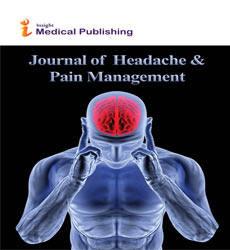Abstract
Tension-Type Headache: A Life-Course Review
Background: Tension-type headache is the most prevalent primary headache type worldwide and is associated with a wide spectrum of disability. Although progress has been made in understanding the complex mechanisms that lead to the pathogenesis of tension-type headache, to date there are no clear-cut markers of what makes tension-type headache unique. Due to a relative lack of research (compared to migraine), the pathophysiology of tension-type headache is not well understood and there are gaps in the epidemiological data, particularly from Australasia.
Objective: To provide a structured narrative review of the prevalence and correlates of tension-type headache, with focus on a birth cohort of young adults from the Dunedin Multidisciplinary Health and Development Study (DMHDS) in New Zealand.
Method: A review of the literature was conducted to identify the epidemiological, diagnostic, methodological and pathophysiological factors that contribute to tension-type headache being a specific entity.
Results: Findings suggest that prevalence rates of TTH vary across global region, age, gender and method of assessment. A wide range of risk factors for TTH was identified, and recent advances in genetic and neurobiological research have increased understanding of the etiology of TTH. Few longitudinal studies have been conducted on TTH.
Conclusion: Further longitudinal epidemiological research is needed to help distinguish tension-type headache from migraine, particularly in young people. Identifying the specific markers of tension-type headache is a first step towards developing effective prevention and treatment strategies.
https://bluecruiseturkey.co
https://bestbluecruises.com
https://marmarisboatcharter.com
https://bodrumboatcharter.com
https://fethiyeboatcharter.com
https://gocekboatcharter.com
https://ssplusyachting.com
Author(s):
Karen E Waldie, Jude Buckley, Peter N. Bull and Richie Poulton
Abstract | Full-Text | PDF
Share this

Abstracted/Indexed in
- Google Scholar
- Directory of Research Journal Indexing (DRJI)
- WorldCat
- Secret Search Engine Labs
Open Access Journals
- Aquaculture & Veterinary Science
- Chemistry & Chemical Sciences
- Clinical Sciences
- Engineering
- General Science
- Genetics & Molecular Biology
- Health Care & Nursing
- Immunology & Microbiology
- Materials Science
- Mathematics & Physics
- Medical Sciences
- Neurology & Psychiatry
- Oncology & Cancer Science
- Pharmaceutical Sciences
